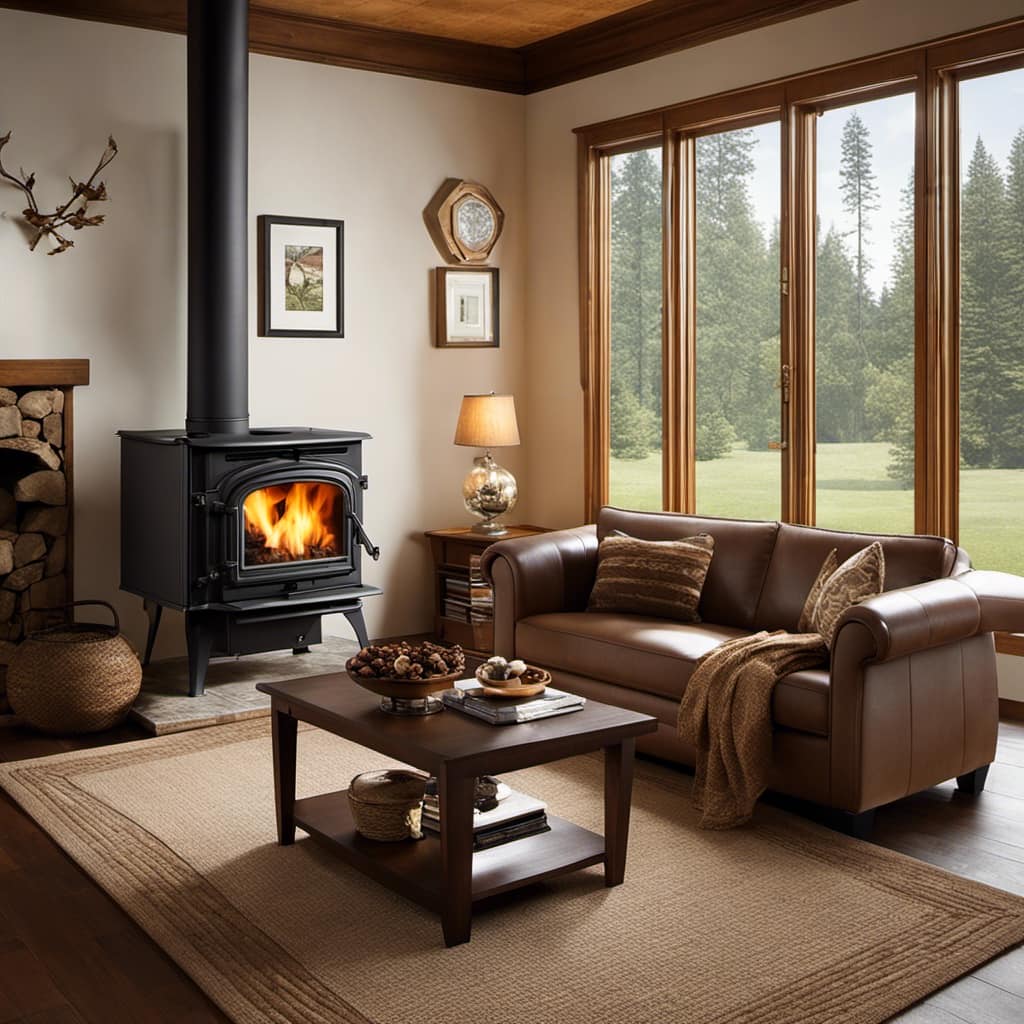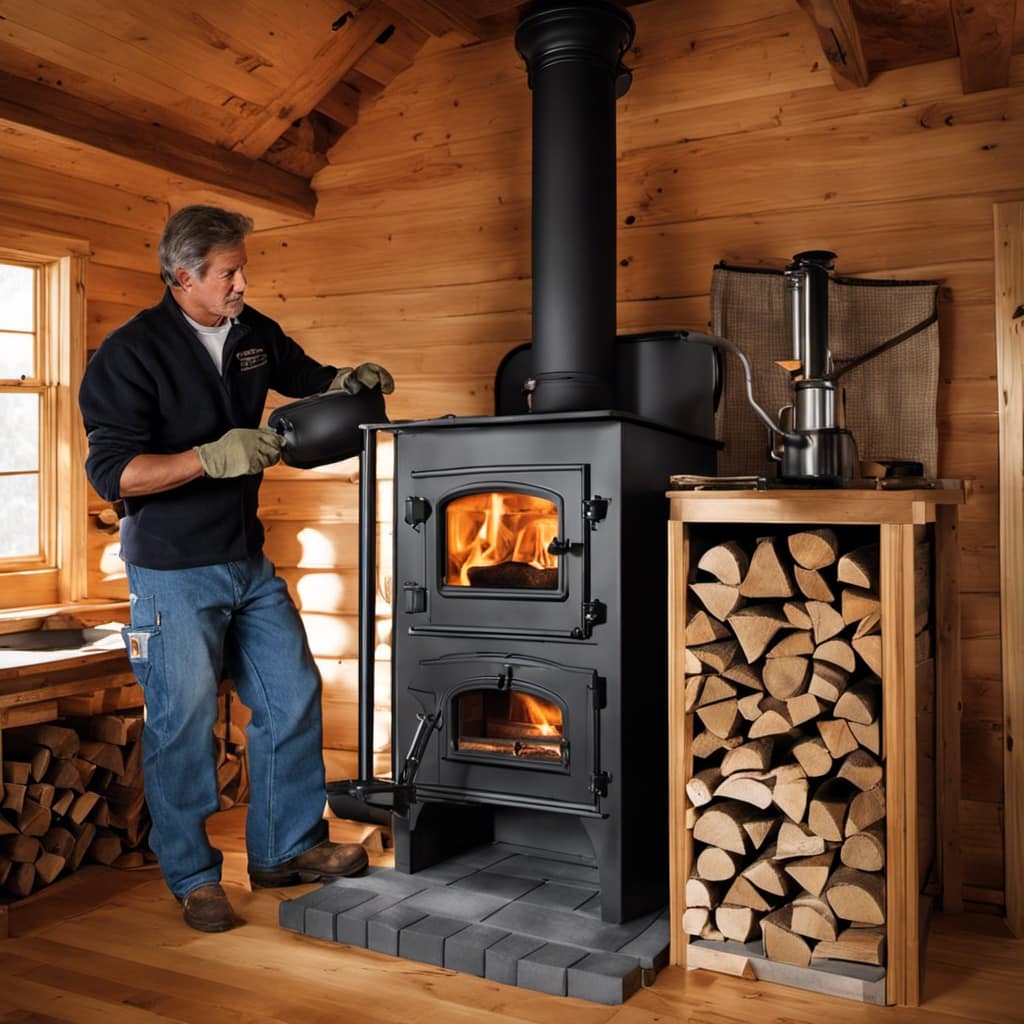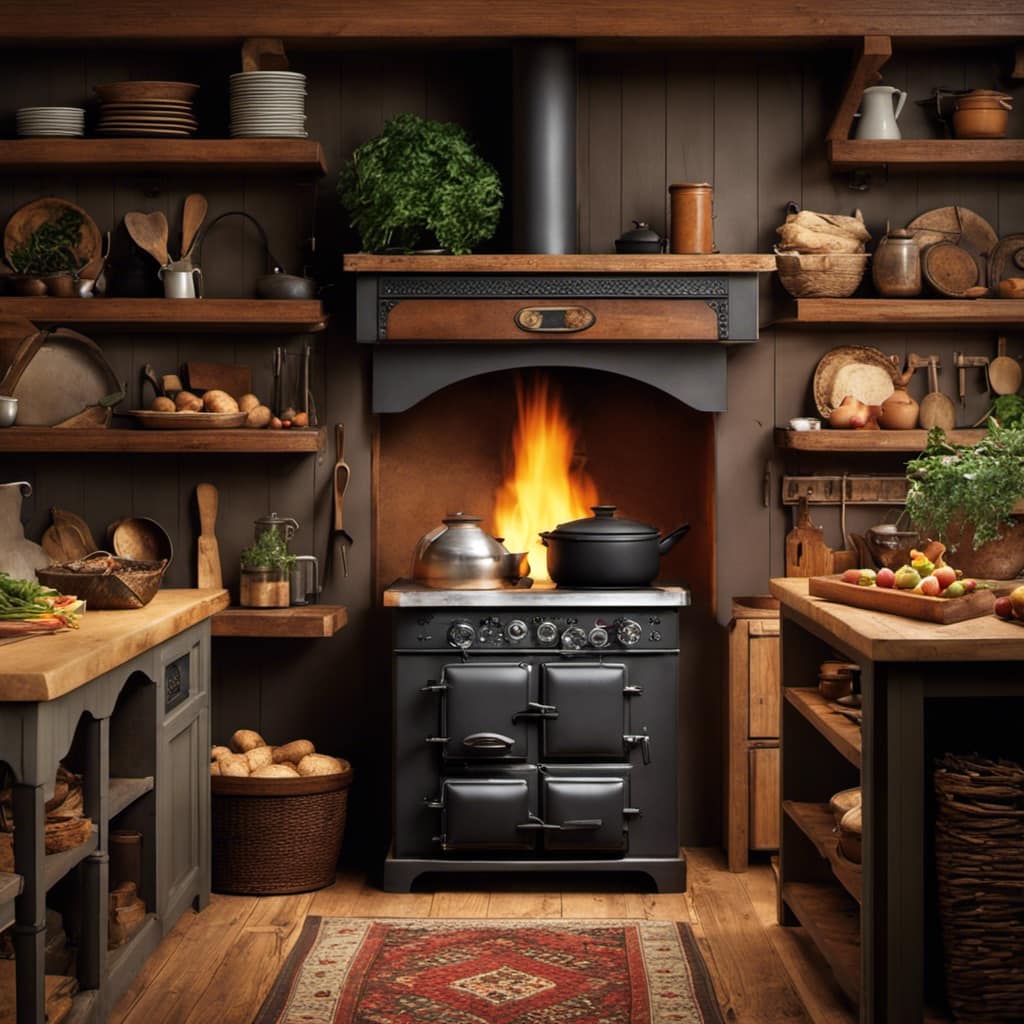
When I walk into my living room, I notice a faint, unpleasant smell. I wonder why my wood stove is emitting an odor when it is not being used.
Curiosity leads me to uncover the possible causes behind this lingering odor. In this article, I will delve into the world of creosote buildup, moisture, mold, and ventilation issues, and provide you with effective cleaning and maintenance techniques to eliminate that pesky smell.
Let’s dig in and discover the secrets behind this mysterious scent.
Key Takeaways
- Creosote buildup on chimney walls and stovepipe can cause odor in an unused wood stove.
- Burning wood with moisture can lead to odor and mold growth.
- Improper ventilation can result in lingering smoke and gases, contributing to the smell in a wood stove.
- Regular cleaning, maintenance, and use of dry, seasoned wood are essential to eliminate odor in a wood stove.
Possible Causes of Odor in an Unused Wood Stove
I think the odor in my unused wood stove might be caused by a buildup of creosote. Creosote is a black, oily substance that can accumulate on the walls of a wood stove chimney. It’s a byproduct of burning wood and can have a strong, unpleasant smell.

Besides creosote buildup, there are other potential causes of odor in an unused wood stove. One possibility is a gas leak. Gas leaks can occur in the gas line or fittings connected to the wood stove, and the smell can be similar to rotten eggs.
Another potential cause is an insect infestation. Insects such as ants, beetles, or termites can make their way into the wood stove and create nests or leave behind droppings, which can emit an unpleasant odor.
If you notice any strange smells coming from your wood stove, it’s essential to investigate and address the issue promptly to ensure a safe and odor-free environment.
Understanding Creosote Buildup and Its Smell
The smell coming from my wood stove when it’s not in use is likely caused by creosote buildup. Creosote is a black, tar-like substance that forms when wood is burned incompletely or at low temperatures. It can accumulate inside the chimney and stovepipe, leading to a variety of issues. Understanding creosote formation is important to maintain the efficiency and safety of your wood stove. Creosote is formed when volatile gases and unburned particles in the smoke condense and solidify on the cooler surfaces of the chimney. This buildup can restrict airflow, reduce heat transfer, and increase the risk of chimney fires. To prevent creosote buildup, it is essential to burn dry, well-seasoned firewood, maintain proper airflow, and have regular chimney cleanings. Regular maintenance and cleaning will ensure optimal stove performance and minimize the unpleasant odor associated with creosote.

| Creosote Formation | Impact on Stove Performance |
|---|---|
| Incomplete burning | Reduced heat output |
| Low-temperature burning | Increased risk of chimney fires |
| Moisture in firewood | Restricted airflow |
How Moisture and Mold Can Contribute to the Odor
When wood is burned with moisture, it can contribute to the odor and mold growth. Moisture control is crucial in preventing mold growth and eliminating unpleasant smells in your wood stove.
Excess moisture in the wood can come from various sources such as rain, high humidity, or improper storage. To ensure proper moisture control, it’s important to store your firewood in a dry and well-ventilated area. This will help reduce the moisture content in the wood and prevent the growth of mold.
Additionally, using seasoned firewood with a moisture content below 20% is essential. This can be achieved by allowing the wood to dry for at least 6-12 months before burning.
Regularly inspecting and cleaning your wood stove can also help prevent mold growth and eliminate any lingering odors.

The Role of Improper Ventilation in Wood Stove Smell
Improper ventilation can lead to a persistent smell in the wood stove. When the stove isn’t properly ventilated, it can cause smoke and gases to linger inside. This can result in a buildup of odorous particles, which can be unpleasant and difficult to get rid of.
The role of insulation in this scenario is crucial. Insufficient insulation can cause heat to escape from the stove, leading to lower temperatures and incomplete combustion. This incomplete combustion can produce more smoke and gases, contributing to the persistent smell.
Additionally, the impact of temperature can’t be overlooked. Low temperatures can hinder the efficiency of the stove, causing it to burn less efficiently and produce more smoke. As a result, the odor becomes more noticeable.
To effectively eliminate this odor, it’s important to implement proper cleaning and maintenance techniques.

Effective Cleaning and Maintenance Techniques to Eliminate Odor
I can effectively eliminate the odor by regularly cleaning and maintaining my wood stove. Cleaning methods are essential to prevent the buildup of soot, debris, and creosote, which can cause unpleasant smells.
One effective cleaning method is to use a brush or vacuum to remove any loose ash or debris from the firebox and chimney. It’s also important to inspect and clean the chimney regularly to prevent the accumulation of creosote, a highly flammable substance that can cause both odor and fire hazards.
Additionally, preventive measures such as using dry, seasoned wood and ensuring proper ventilation can help reduce the occurrence of odors. Regularly checking and cleaning the air vents, gaskets, and seals can further ensure that the wood stove operates efficiently and without any unpleasant smells.
Frequently Asked Questions
What Are Some Other Common Sources of Odor in a Home That May Be Mistaken for a Wood Stove Smell?
Other common sources of odor in a home that may be mistaken for a wood stove smell include pet odors and musty smells. To identify and eliminate pet odors, clean regularly and use odor-neutralizing products. Musty smells can be caused by moisture or mold, so address any water leaks and ensure proper ventilation.

Can Using a Specific Type of Wood or Wood Treatment Affect the Odor of a Wood Stove When Not in Use?
Using certain types of wood or wood treatments can affect the odor of a wood stove when not in use. Regular wood stove maintenance is crucial to prevent buildup and ensure efficient burning.
Are There Any Health Risks Associated With the Odors Emitted by an Unused Wood Stove?
There are potential health risks associated with the odors emitted by an unused wood stove. These odors can affect indoor air quality and proper ventilation is important to minimize any negative effects.
Can the Smell From an Unused Wood Stove Be Eliminated Completely, or Will It Always Linger to Some Extent?
Eliminating wood stove smell is possible, but some odors may linger to some extent. To minimize odors in unused wood stoves, regular cleaning, proper ventilation, and using odor-absorbing materials like baking soda or activated charcoal can help.
Are There Any Specific Measures I Can Take to Prevent Odors in My Wood Stove When It’s Not in Use, Besides Regular Cleaning and Maintenance?
There are preventive measures I can take to prevent odors in my wood stove when it’s not in use, such as using alternative fuel options and ensuring proper ventilation. Regular cleaning and maintenance are also essential.

Conclusion
After delving into the possible causes of a wood stove smell when not in use, it becomes clear that creosote buildup, moisture and mold, and improper ventilation can all contribute to this unpleasant odor.
However, fear not! By implementing effective cleaning and maintenance techniques, such as regularly removing creosote, keeping the stove dry, and ensuring proper ventilation, you can banish that smell and enjoy a fresh, clean wood stove experience.
So go ahead, breathe in the warmth and coziness without any unwanted scents lingering in the air.
Growing up surrounded by the vast beauty of nature, Sierra was always drawn to the call of the wild. While others sought the comfort of the familiar, she ventured out, embracing the unpredictable and finding stories in the heartbeat of nature.
At the epicenter of every remarkable venture lies a dynamic team—a fusion of diverse talents, visions, and passions. The essence of Best Small Wood Stoves is crafted and refined by such a trio: Sierra, Logan, and Terra. Their collective expertise has transformed the platform into a leading authority on small wood stoves, radiating warmth and knowledge in equal measure.











